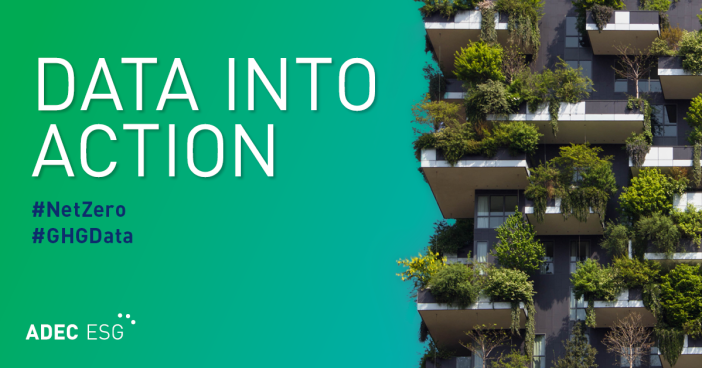Good data drives smarter decision-making. When developing net-zero strategies—strategies specifically designed to help your organization reduce its carbon emissions to as close to zero as possible—good data is essential. Below, we discuss how greenhouse gas (GHG) inventory data can be transformed into a foundation for strong net-zero strategies and achievable achievable science-based targets.
A company’s science-based target should be based on feasible net-zero strategies, identified using a quantitative evidence-based approach. The U.S. Securities and Exchange Commission (SEC), U.K. Financial Conduct Authority (FCA), International Financial Reporting Standards (IFRS), and other national and regional regulatory agencies share this belief. As such, organizations are increasingly expected to demonstrate a clear link between their emissions reduction commitments and the strategies they plan to use to achieve them, if they wish to comply with the above bodies. A simple approach to identifying and prioritizing net-zero strategies is exactly what many companies need—now. We describe one such approach in the following sections.
Step 1: Determine your key emission sources
Before jumping into the weeds of what actions to take, you should take a detailed look at your (GHG inventory data and use this information to identify your key emission sources. Start by looking at the magnitude of scopes 1, 2, and 3. What are your total emissions, and what percentage of your total emissions are from scope 1 and scope 2 sources, and the different scope 3 categories? This single analysis can tell you a lot about how you will need to structure your science-based target(s) and where you will need to spend the bulk of your strategy development time.
Next, consider the sources of those emissions and decide whether or not they are key emission sources. For example, let’s assume your scope 1 emissions make up 2%, your scope 2 emissions make up 28%, and your scope 3 emissions make up 70% of the overall GHG emissions profile. You also identify that your scope 3 emissions are coming from five sources. Purchased goods and services account for 48% of your overall emissions, upstream transportation accounts for 35%, business travel accounts for 15%, waste in operations for 1%, and end-of-life treatment of sold products for 1%.
In this case, scope 2 and scope 3 purchased goods and services, upstream transportation, and business travel categories could be considered key emission sources for your organization, and these are likely the sources where you want to focus the majority of your near- and mid-term mitigation efforts. Find your top three emissions sources and focus majority of your effort there to drive meaningful progress. Don’t take on too much at once.
With this prioritization, move on to step two.
Step 2: Identify what specific activities are causing emissions
You have identified your key emission sources for scopes 1, 2, and 3. Now, break down those sources into individual activities and identify the purpose of those activities.
For example, if you identified a key emissions source as employee commute, dissect what specific activities are the cause of emissions. Is it the consumption of gasoline while driving personal vehicles? What about diesel engines? Next, consider the primary purpose of the activity. In this case, the purpose is simple: for employees to travel to and from work.
Step 3: Define your guiding principles
Before moving on, you will want to think about your organization’s core values and guiding principles. How do these intersect with your key emission sources and the purpose behind emission-causing activities? For example, if you are a mobility company manufacturing electric scooters, it likely conflicts with your brand values to have employee commuting as a high emissions source. Establishing what these intersections are will help you identify what areas of improvement you want to focus on, and which areas you’ll most likely be able to secure resources for reducing. Ultimately, what is most important to your organization, where do you want to make change happen, and how much are you willing to change?
Step 4: Identify potential mitigation strategies
Next, ask yourself: What are your levers or strategies? How can you create change within each key source and activity to reduce emissions, while still fulfilling the overall purpose of that activity? These solutions will vary in size and scope and include things like retrofits for alternative cooling, analysis for optimization, changes in procurement methods, improving engagement with your supply chain, policy changes, fuel switching, and more.
In our previous example of employee commute, if the purpose of the activity is travel to and from work, potential strategies may include trip reduction (such as remote work policies), shifting modes of travel (to public transit, for example), and switching fuel sources (promoting the use of EVs). These strategies target the activity—gas/diesel fuel consumption—while fulfilling the purpose of the activity, to travel to and from work.
Step 5: Run mitigation and implementation scenarios and determine feasibility
Lastly, run your strategies through implementation scenarios. The goal here is to determine which solution is most feasible given your company’s situation, goals, resources, and values. Modeling different scenarios based upon your organizational data will help you determine possible outcomes for each of your solutions and have confidence in those that you decide best work for your organization.
For example, let us say your models are a Current Implementation Scenario (where no changes are made), a Moderate Implementation Scenario (where some changes are made), and an Aggressive Implementation Scenario (where changes are made on a greater scale).
If you were to implement solutions A, B, and C, how would they affect your emissions in the Moderate Implementation Scenario? How would they contribute to target reductions? What about the Aggressive Implementation Scenario? How much greater of an impact would this scenario have on your targets, and are the changes necessary to achieve this increased impact (if any) feasible for your company?
Modelling, or scenario analysis, allows you to hypothetically propose each solution and see what is possible while engaging subject-matter experts within your company. Seek out these internal stakeholders and determine what is actually achievable. Take into account multiple assessment factors such as technical feasibility, economic feasibility, operational feasibility, and cultural acceptance within your organization. Subject-matter experts throughout your organization will be key in helping you determine these factors.
- Technical feasibility: Is the solution you are proposing possible on a technical level? Does your organization have the capabilities to complete the project and achieve the desired result? Consider your technical expertise and limitations and understand that seeking third-party support to accomplish your goals is also an option.
- Economic feasibility: Reviewing the cost of the solution, financing structure, profitability, and other financial parameters within your model, can the project still be considered feasible?
- Operational feasibility: How well does the solution or set of solutions actually work? How much does it contribute toward your net-zero goals? Does it meet your needs, and is it a reliable, sustainable solution?
- Cultural feasibility or acceptance: Is the project a cultural fit within your organization, including your employees, your values, your brand, and other stakeholders?
The best decisions are backed by good data. With many investors and public agencies now calling for or requiring you to report on your ESG data, why not put that reporting to the best use possible? Your company’s data is unique—it tells the story of where you started and how far you have come. Now, start using that information to set targets and use a quantitative approach to create evidence-based net-zero strategies that will define your company’s future.
ADEC ESG Solutions provides fully-integrated industry expertise, software solutions, and data management to organizations leading global, sustainable change. Click here to learn more about how our team can help you track and manage ESG data, set targets, and integrate ESG into your strategy.




